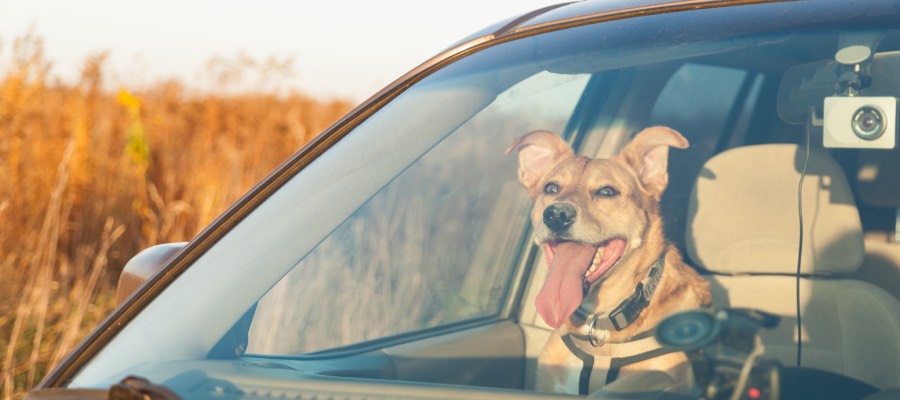Moving long distance can be a challenging experience for anyone, but it can be even more stressful for our furry friends. To ensure a smooth and happy transition for your pets, it’s essential to plan carefully and consider their needs throughout the moving process. In this blog post, we’ll cover some essential tips for making your long-distance move with pets a success.
Preparing Your Loved Pets for a Long Distance Move
Before embarking on your long distance move, it’s crucial to get your pets ready for the journey. This includes:
- Scheduling a visit to the vet for a health check and ensuring your pets are up-to-date on vaccinations.
- Obtaining health certificates and any required travel documents.
- Updating your pets’ microchip information and identification tags with your new address.
- Researching your new location’s pet regulations and requirements (e.g., licensing, leash laws).
Options for Transporting Pets During a Long Distance Move
When moving long distance, you have several options for transporting your pets:
- Travel by car: Driving your pets to your new home allows you to monitor their comfort and well-being throughout the journey. Be sure to plan for regular breaks, bring plenty of water and food, and create a comfortable, secure space for your pets in the vehicle.
- Air travel: For long-distance moves that require air travel, research pet-friendly airlines and familiarize yourself with their pet policies. Book a direct flight if you can to minimize travel time and stress for your pets.
- Professional pet transportation services: If you’re unable to transport your pets yourself, consider hiring a professional pet transportation service. These companies specialize in moving pets safely and comfortably and can provide peace of mind during your move.

Tips for Keeping Pets Comfortable and Stress-Free During Travel
Long-distance travel can be stressful for pets, but there are ways to make the journey more comfortable for them:
- Maintain a consistent feeding and bathroom break schedule during the trip.
- Bring their favorite toys, blankets, and bedding to create a familiar environment.
- Use calming aids such as pheromone sprays, anxiety vests, or calming supplements.
- Be patient and reassuring, providing plenty of love and attention along the way.
Settling Pets into a New Home and Environment
After arriving at your new home, give your pets time to adjust to their new surroundings:
- Set up a safe and familiar space for your pets with their favorite belongings.
- Maintain their regular feeding, walking, and play routines to provide a sense of stability.
- Gradually introduce your pets to new areas of the home and neighborhood, allowing them to explore at their own pace.
- Be patient and understanding as your pets adjust to their new environment.

Resources for Pet Owners in Your New Community
To help your pets thrive in their new home, research local resources for pet owners, such as:
- Veterinarians and emergency pet clinics
- Groomers, pet stores, and dog parks
- Local pet-friendly attractions and events
- Community groups or social media pages for pet owners
What do you need to travel with your pet within the US?
When traveling with your pet within the United States, there are a few key things you should have on hand to ensure a smooth and stress-free trip. These include:
- Health Certificate: Depending on your mode of transportation and destination, a health certificate from a licensed veterinarian might be required. This document verifies that your pet is in good health and up-to-date on vaccinations. Always check the specific requirements of the airline or state you are traveling to.
- ID Tags and Microchip: Make sure your pet is wearing a collar with an ID tag that includes your contact information. It’s also wise to have your pet microchipped, in case their collar comes off during the journey.
- Leash and Carrier: Keep your pet secure and comfortable with a sturdy leash and an appropriately-sized carrier or crate. Some airlines have specific requirements for pet carriers, so be sure to check with them before your trip.
- Food, Water, and Treats: Pack enough food for the duration of your trip, as well as some extra in case of delays. Bring portable food and water bowls, and don’t forget treats for rewarding good behavior during the journey.
- Medications and First-Aid Kit: If your pet is on any medications, bring an ample supply for the trip. It’s also wise to pack a basic pet first-aid kit, including items such as bandages, antiseptic wipes, and a digital thermometer.
- Comfort Items: Bring along your pet’s favorite toys, blanket, or bed to help them feel more at ease during the trip. Familiar smells and items can provide comfort and reduce stress.
- Waste Bags and Cleaning Supplies: Don’t forget to pack waste bags for potty breaks and some cleaning supplies, like paper towels and disinfectant wipes, in case of accidents.
What Pet Lovers in Denver Ask
Why is moving so stressful for cats?
Moving can be stressful for cats because they are territorial animals and thrive on familiarity and routine. When their environment changes drastically during a move, it can cause anxiety and disorientation, making the experience quite stressful for them.
 How long will it take my cat to adjust to a new place?
How long will it take my cat to adjust to a new place?
The time it takes for a cat to adjust to a new place can vary depending on the individual cat and the circumstances of the move. Generally, it can take anywhere from a few days to a few weeks for a cat to become comfortable in their new home. Patience and creating a safe, familiar space for your cat can help them adjust more quickly.
When traveling with pets, how often should you stop?
When traveling with pets, it’s essential to take regular breaks, ideally every 2-3 hours. This allows your pet to stretch their legs, use the bathroom, and have a drink of water. Frequent breaks can also help reduce stress and anxiety during the trip.
How do you move across country with multiple pets?
Moving across the country with multiple pets requires careful planning and organization. Some tips include:
- Arrange for appropriate carriers and restraints to keep your pets safe during travel.
- Plan your route and identify pet-friendly accommodations along the way.
- Keep your pets’ routine as consistent as possible, including feeding and exercise schedules.
- Bring along familiar items like toys, blankets, and bedding to help your pets feel more comfortable.
- Ensure your pets have updated identification tags and microchips with your current contact information.
 Are pets safe in cargo?
Are pets safe in cargo?
While many pets travel safely in the cargo hold of airplanes, there are potential risks involved, such as temperature fluctuations, noise, and the possibility of injury or escape. It’s crucial to research airline policies, choose a reputable airline, and take necessary precautions to ensure your pet’s safety if they must travel in cargo.

Is moving difficult for dogs?
Moving can be difficult for dogs, as it disrupts their routine and familiar surroundings. However, dogs are generally more adaptable than cats and may adjust more quickly to their new environment. To help your dog cope with the move, maintain their routine as much as possible, provide plenty of love and reassurance, and introduce them gradually to their new surroundings.
How much time will it take my dog to adjust to a new place?
The time it takes for dogs to adjust to a new place can vary depending on the individual dog, their personality, and the circumstances surrounding the move. Generally, it may take anywhere from a few days to a few weeks for a dog to feel comfortable in their new home. Giving your dog plenty of love, reassurance, and maintaining their routine as much as possible can help them adjust more quickly and smoothly to their new environment. Remember, patience and understanding are essential during this transitional period for your furry friend.
By following these tips and planning ahead, you can ensure a smooth and stress-free long-distance move for both you and your pets. Embrace the adventure and enjoy this exciting new chapter in your lives together!



